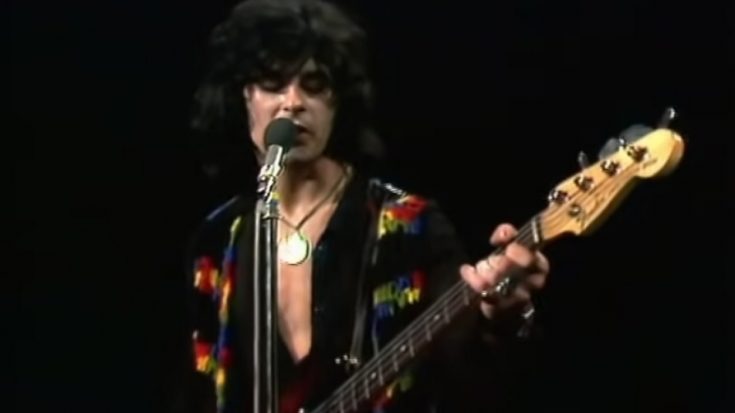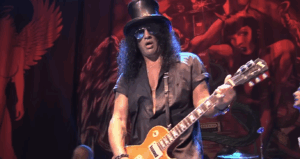Forgotten Legends: ’70s Musicians Who Time Left Behind

via Beat-Club / YouTube
The 1970s was a decade that produced more than just glitter balls and polyester suits—it was a time when music was bursting at the seams with experimentation and reinvention. Folk-rock poets, reggae pioneers, and arena-filling rockers all carved their place in history, defining a cultural moment that was as eclectic as it was electrifying. For a brief stretch, the charts reflected this diversity, and the artists behind it were elevated to the heights of superstardom.
Yet fame is a fleeting companion. The same industry that crowned these musicians kings and queens of their era could just as easily turn its back once trends shifted and new sounds took center stage. Some artists stepped away willingly, content with their moment in the spotlight, while others were swept aside by an unforgiving cultural tide. In either case, the brilliant spark they once embodied dimmed from public view.
Still, their stories are worth revisiting. Behind every one-hit wonder or short-lived chart sensation lies a tale of ambition, artistry, and the unpredictable nature of fame. These forgotten legends remind us that music history isn’t just written by those who endure—it’s also shaped by those who briefly burned bright and then slipped into the background as time moved on.
Grand Funk Railroad
At the dawn of the 1970s, few bands embodied the promise of hard rock quite like Grand Funk Railroad. Their blend of raw energy and relentless touring schedules made them a force on the charts and in stadiums. Between 1969 and 1974, they released ten consecutive albums that all went gold or platinum, a staggering feat for the time. Their success was so overwhelming that they sold out New York’s Shea Stadium in just three days, a record previously held only by the Beatles.
Songs like “We’re an American Band” and their cover of “The Loco-Motion” dominated the airwaves, cementing their status as a band that could bridge both heavy rock crowds and mainstream audiences. Their music captured the restless spirit of the era, serving as a soundtrack for countless young fans seeking an escape. For a moment, Grand Funk Railroad stood shoulder-to-shoulder with rock’s biggest names.
But the momentum didn’t last. By the mid-1970s, creativity began to wane and the cultural tide shifted toward new sounds. The band’s collaboration with Frank Zappa produced little revival, and frontman Mark Farner eventually pursued a solo career. Attempts at a comeback in the early 1980s fizzled, leaving Grand Funk remembered more for their brief dominance than their staying power.
The Raspberries
The Raspberries helped define the bright, guitar-driven style of power pop that briefly caught fire in the early 1970s. With their combination of crunchy riffs and soaring harmonies, they stood out in a crowded musical landscape. Their 1972 hit “Go All the Way” reached No. 5 on the charts and became an enduring anthem, resurfacing decades later on movie soundtracks that celebrated ’70s nostalgia.
Despite their initial success, the band’s run was short-lived. Internal tensions led to lineup changes, and by 1975, the Raspberries were finished. For a band that once seemed poised to carry power pop into the mainstream, their sudden collapse felt like a missed opportunity. Audiences quickly moved on, and the Raspberries slipped into the shadows of rock history.
Frontman Eric Carmen forged ahead with a solo career that leaned more heavily into ballads and soft rock. Songs like “All By Myself” and “Make Me Lose Control” earned him success, though in a very different lane from his earlier work. Carmen’s passing in 2024 closed the book on a career that began with promise, but the Raspberries remain largely overlooked outside of rock historians and devoted fans.
Seals and Crofts
Jim Seals and Dash Crofts carved out a unique space in the 1970s with their gentle blend of folk-pop and soft rock. Building on their earlier stint with The Champs of “Tequila” fame, the duo found their voice through rich harmonies, acoustic textures, and spiritual undertones. Songs like “Summer Breeze” and “Diamond Girl” became radio staples, epitomizing the mellow sound of the decade.
Their music struck a chord with audiences searching for reflection and calm in an era often defined by chaos. Over a dozen of their singles charted between 1972 and 1978, making them one of the era’s most successful duos. Their influence could be heard across adult contemporary radio and in the work of other soft rock acts that followed.
But as the 1970s faded, so too did their popularity. By 1980, their contract was complete, and both Seals and Crofts walked away from the spotlight, relocating with their families abroad. They reunited sporadically for concerts, but Seals’ declining health ended those efforts. His passing in 2022 marked the quiet conclusion of a career that once defined an entire mood in popular music.
Leo Sayer
Few artists in the 1970s were as versatile—or as surprising—as Leo Sayer. Initially emerging as a songwriter whose work was recorded by Roger Daltrey of The Who, Sayer soon stepped into the spotlight himself. His early hit “The Show Must Go On” introduced him as a theatrical performer with a clown-inspired stage persona and a raw, distinctive voice.
Sayer didn’t stay in one lane for long. Shedding his theatrical look, he moved into blues-rock and then soft disco, showcasing an adaptability that brought him global hits. “You Make Me Feel Like Dancing” and “When I Need You” both topped charts in the mid-1970s, cementing his reputation as a versatile hitmaker. For a time, Sayer seemed capable of reshaping himself endlessly to suit the era’s tastes.
But reinvention has limits. After “More Than I Can Say” peaked at No. 2 in the U.S., Sayer’s chart presence waned. He continued to record and perform, finding modest success in the U.K., but his international star faded quickly. Today, Sayer’s career is remembered in fragments, defined by a handful of massive hits and a restless creative spirit that the public eventually left behind.
America
Formed in the early 1970s by three American teenagers living in the U.K., America rode the wave of the singer-songwriter boom straight to the top. Their debut single, “A Horse with No Name,” captured the folk-rock mood of the time and soared to No. 1 in the U.S. Follow-ups like “Ventura Highway” and “I Need You” reinforced their reputation for crafting introspective, melodic ballads.
The group’s rise was meteoric, and in 1973 they even took home the Grammy for Best New Artist. Albums like Holiday and Hearts continued to produce hits, including enduring soft rock staples such as “Sister Golden Hair” and “Tin Man.” For a stretch, America seemed to embody the reflective side of 1970s popular music.
But momentum eventually slowed. When Dan Peek left the band in 1977, America stumbled, and while they managed a brief revival in the early 1980s with “You Can Do Magic,” they never regained their earlier dominance. They remained a consistent touring act well into the 2010s, but their days as chart-toppers were long behind them.
Bread
Bread perfected the art of the soft rock ballad in the early 1970s. Their gentle, acoustic-driven songs provided the soundtrack for quiet evenings and tender moments, offering an alternative to the heavier sounds dominating the decade. With James Griffin and David Gates sharing frontman duties, the group produced a string of romantic hits, including “Make It With You,” “It Don’t Matter to Me,” and “Baby I’m-A Want You.”
Their success, however, came with tension. Gates’ songs consistently received more radio play and attention, creating friction with Griffin, who felt sidelined in the creative partnership. By 1973, the band had dissolved, despite their impressive run. A brief reunion in 1976 produced “Lost Without Your Love,” but the cracks in their relationship only deepened.
When Griffin left again, Gates attempted to carry on under the Bread name, sparking lawsuits over the use of the brand. Both musicians continued with solo careers, but neither reached the commercial heights they had enjoyed together. Bread remains remembered for its fleeting dominance and for defining a softer side of 1970s rock.
Three Dog Night
Few bands matched the commercial juggernaut that was Three Dog Night during the first half of the 1970s. Blending the polish of a vocal group with the power of a rock band, they created a formula that delivered hit after hit. By sourcing songs from emerging songwriters, they introduced audiences to tracks like Randy Newman’s “Mama Told Me (Not to Come)” and Hoyt Axton’s “Joy to the World,” both of which topped the charts.
Between 1969 and 1974, Three Dog Night sold more records and charted more top 10 singles than any other rock act. Their voices and repertoire defined a generation, and their songs became fixtures in films and on classic rock radio. Yet their reliance on outside material, while innovative, meant their identity was tied more to performance than songwriting.
By the mid-1970s, departures among both musicians and singers weakened the group’s momentum. Attempts to modernize in the 1980s with a New Wave record fell flat. Still, with members like Danny Hutton and Cory Wells, the band continued touring the nostalgia circuit, proving their enduring appeal even as new music eluded them.
Anne Murray
Anne Murray’s rise in the 1970s blurred the boundaries between country, pop, and adult contemporary. Her gentle, soothing voice made “Snowbird” a breakthrough hit in 1970, and throughout the decade she became a fixture on both radio and television. Songs such as “Danny’s Song” and “You Won’t See Me” reinforced her appeal across generations, striking a chord with audiences who preferred calm over chaos.
While her peers leaned into disco, hard rock, or punk, Murray found her niche with ballads and covers that emphasized warmth and restraint. In 1978, she even crossed into mainstream pop with the chart-topping “You Needed Me,” solidifying her status as one of Canada’s most successful musical exports. Her accessible style made her a household name, even if it didn’t always align with the edgier trends of the era.
As the 1980s arrived, radio tastes shifted, and Murray transitioned fully into country music. By the 1990s, the resurgence of traditional country sounds pushed her further to the sidelines. Though she remained respected, her era of crossover dominance had long since passed.
Melanie
Melanie’s music carried the torch of the 1960s counterculture into the early 1970s. A performer at Woodstock, she became part of the festival’s lore when audiences lit candles during her rain-soaked set, inspiring her hit “Lay Down (Candles in the Rain).” With her soulful voice and folk sensibility, she channeled both the hope and disillusionment of her generation.
Her catalog included a mix of heartfelt originals and eclectic covers, with “What Have They Done to My Song Ma” and “Ruby Tuesday” resonating strongly with fans. Her biggest commercial triumph came with “Brand New Key” in 1971, a playful track that became controversial for its perceived innuendo yet still soared to No. 1. For a brief moment, Melanie stood as one of the defining singer-songwriters of her era.
By the mid-1970s, she scaled back her recording schedule to raise a family, stepping away from the spotlight. Later appearances, including an Emmy-winning theme song in the 1980s and a stage musical about her life in 2012, kept her name alive. Her passing in 2024 marked the end of a career that once symbolized the enduring spirit of Woodstock.
Andy Gibb
Andy Gibb’s career burned brightly but all too briefly. With the support of his older brothers in the Bee Gees, he emerged in 1977 just as disco reached its peak. His youthful charm and striking resemblance to his siblings made him an instant sensation, and his first three singles—“I Just Want to Be Your Everything,” “(Love Is) Thicker Than Water,” and “Shadow Dancing”—all topped the charts.
In just a few short years, Gibb became a teen idol and international star, embodying the glitz and glamour of late-1970s pop. His appeal extended beyond music, leading to acting and hosting opportunities that showcased his charisma. For fans swept up in disco fever, Andy Gibb was the ultimate heartthrob.
But fame proved fragile. As disco fell out of favor and personal struggles mounted, Gibb’s career faltered. Substance abuse derailed his professional opportunities, and his health deteriorated. In 1988, he died at just 30 years old, leaving behind a legacy of dazzling success and heartbreaking loss.
The Bay City Rollers
For a moment in the mid-1970s, it seemed as if the Bay City Rollers were destined to be the next global sensation. Hailing from Scotland and proudly wearing tartan as part of their image, the group fueled a craze known as “Rollermania,” complete with screaming fans and wall-to-wall media coverage. Their mix of bubblegum pop and glam rock energy produced a steady stream of hits, including “Shang-A-Lang,” “Money Honey,” and a chart-topping U.S. success with “Saturday Night.”
The band’s youthful energy and singalong choruses made them especially popular with teenage audiences. They placed ten singles in the U.K. Top 10, covering classics like “Bye Bye Baby” while writing originals that fit neatly into the mid-’70s pop scene. For a brief period, their popularity was second only to the era’s most established acts, suggesting they might have staying power.
But as with many teen idol-driven phenomena, the shine quickly wore off. By 1978, the band’s core members had begun to exit, and fans moved on to the next wave of pop stars. Though they enjoyed a moment of dizzying popularity, the Bay City Rollers are largely remembered today as a fleeting craze of the 1970s.
Badfinger
Badfinger’s story began with promise and ended in tragedy. Originally known as the Iveys, the Welsh group was discovered by associates of the Beatles and signed to Apple Records. Their name change, inspired by a Beatles demo called “Bad Finger Boogie,” set the stage for breakout success. With Paul McCartney’s “Come and Get It” as their launchpad, the band quickly earned a reputation as skilled purveyors of power pop.
Hits like “No Matter What,” “Day After Day,” and “Baby Blue” showcased their versatility, moving between shimmering ballads and driving rock numbers. For a time, Badfinger seemed poised to become one of the decade’s defining acts, appealing to both fans of pop craftsmanship and harder-edged rock. Their songs became radio staples and found new life years later through TV and film placements.
Behind the scenes, however, poor management and financial misdeeds crippled the band. Pete Ham’s death in 1975 was followed by Tom Evans’ in 1983, both by suicide, leaving Badfinger remembered as much for its heartbreaking collapse as for its music. Their catalog remains admired, but their story serves as one of the music industry’s darkest cautionary tales.
The Sylvers
The Sylvers emerged as one of the most dynamic family acts of the 1970s, blending soul, funk, and disco into an infectious style. With nine siblings contributing vocals, the group was often compared to the Jackson 5, though their sound leaned more toward Memphis soul. Their breakthrough came in 1972 with “Fool’s Paradise,” which set the stage for a string of R&B and pop hits throughout the decade.
Songs like “Hot Line” and “Boogie Fever” brought the Sylvers mainstream success, with the latter climbing to No. 1 on the pop charts in 1976. Their ability to adapt to changing musical trends kept them relevant through the disco era, and their high-energy performances made them a standout in a crowded field of family-based acts.
But the novelty of a large family group eventually wore thin. By the mid-1980s, their popularity had faded, and after a poorly received 1984 album and the loss of Christopher Sylver in 1985, the group disbanded. Today, the Sylvers are remembered as talented hitmakers who briefly lit up both the R&B and pop worlds.
C.W. McCall
C.W. McCall was a 1970s country star who wasn’t exactly real. The name was a persona created by Bill Fries, an advertising executive who invented the truck-driving balladeer for a series of commercials promoting an Iowa bread company. One of the jingles, “Old Home Filler-Up An’ Keep on-a-Truckin’ Cafe,” became so popular that it was released as a single and reached the country charts, leading to a full-fledged recording career.
Fries, performing as McCall, embraced the role and leaned into America’s fascination with trucking culture. In 1975, he struck gold with “Convoy,” a novelty song built around the CB radio craze. The single topped both the country and pop charts and even inspired a 1978 film adaptation, cementing McCall as a cultural phenomenon of the mid-1970s.
While McCall continued to release trucker-themed songs, none matched the crossover impact of “Convoy.” Fries eventually stepped back into his advertising career, while his collaborator Chip Davis went on to greater fame with Mannheim Steamroller. For many, C.W. McCall stands as one of the decade’s most unusual but unforgettable creations.

























